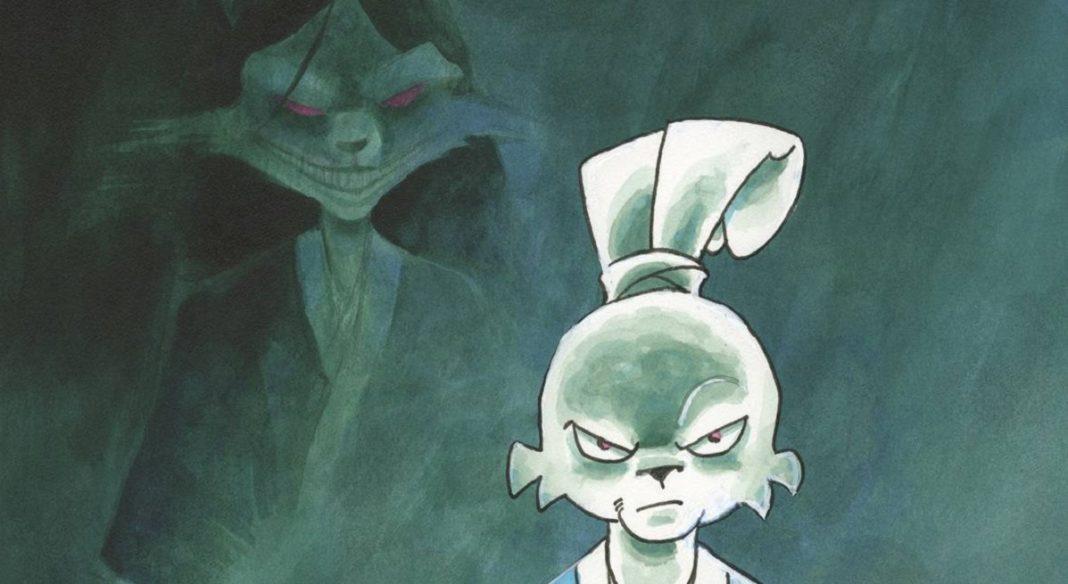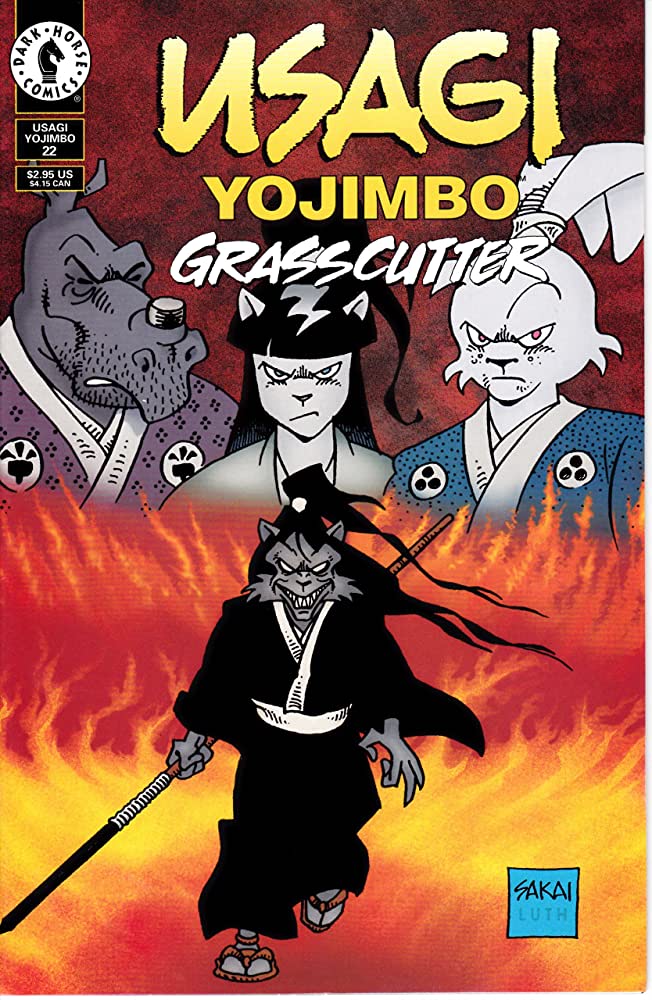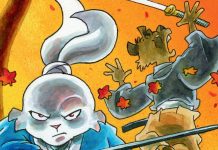“After all, what does a wandering ronin have to do with the affairs of gods and emperors?”
Stan Sakai is one of the best to ever put pencil to paper.
I feel like that doesn’t get said enough. That he doesn’t get nearly enough credit or accolade for just how good he is at his craft. Even having earned multiple Eisners, Ringos, and more awards. He’s at the vanguard of creator-owned comics, consistently telling top-tier tales with precision, action, and heart with Usagi Yojimbo since 1984. With that legacy, and longevity, I suppose it might feel daunting to pick up the comics, not knowing where to start, but that’s kind of the beauty of the series and how Sakai tells his stories. You can start anywhere.
I was there myself when I first started reading the samurai rabbit’s adventures. I had definitely known about Usagi Yojimbo through crossovers with the Teenage Mutant Ninja Turtles, and picked up at least some of the Mirage series in the early ’90s. But it wasn’t until the Dark Horse series in the late ’90s that I really dove in. I had taken something of a hiatus from most comics in the latter part of the decade, focusing on university. I was basically only still buying and reading Hellboy, Starman, and Cerebus. Asking the owner of my local comic shop at the time what else I’d like along those lines, he handed me a stack of almost a year’s worth of Usagi Yojimbo, #13-22. This was the Usagi Yojimbo: Grasscutter arc.
It was brilliant. It drew me in and turned me into a fan for life.
Grasscutter is epic. The story drops you in to start with Japanese mythology and history, giving the provenance of the title of the arc, Kusanagi-no-Tsurugi, the grass-cutting sword. It details the loss of the sword and then switches to the political intrigue and action of Usagi’s present day, mixing up our errant rabbit with a conspiracy to restore the emperor, a plot against one of the Shogun’s staunchest allies, and the evil supernatural forces working towards their own ends. It’s truly impressive how Sakai weaves together the different threads. While it does draw on narrative threads even from the first Usagi Yojimbo stories, the tale is told in a way that the reader gets all of the needed information.
Sakai’s artwork here is in top form. He refined and simplified his style across the time the series was published by Mirage. I think it reached its most familiar form here in the early days of Dark Horse. The characters are slimmer, the faces constructed of only the most essential lines, and what feels like almost an effortless cartooning. I see influences on humour and creatures of Sergio Aragonés‘ Groo alongside the traditional samurai manga elements from artists like Goseki Kojima. It’s beautiful work. And there truly aren’t many comics storytellers out there that can match Sakai’s ability to pace a story. His layouts and panel transitions practically read like a how to.
When you combine all of that with Sakai’s equally award-winning lettering, you have a consummate storyteller.
Stan Sakai’s Usagi Yojimbo: Grasscutter is a highlight in a legendary run that is practically composed of highlights. It blends together Japanese history and mythology with action, humour, and excitement of a funny animal book.
Classic Comic Compendium: USAGI YOJIMBO – GRASSCUTTER
Usagi Yojimbo: Grasscutter
Writer & Artist: Stan Sakai
Publisher: Dark Horse
Release Date: August 1997 – July 1998
Available collected in Usagi Yojimbo – Volume 12: Grasscutter and The Usagi Yojimbo Saga – Book 2
Read past entries in the Classic Comic Compendium!









